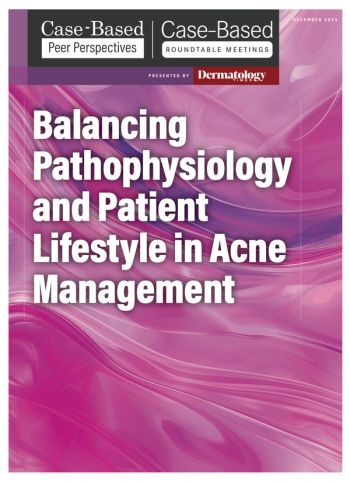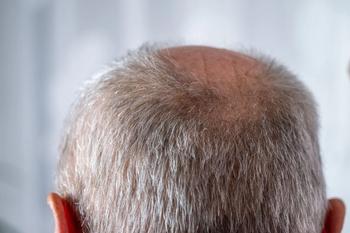
Sculptra and Restylane Deliver 9-Month Skin, Confidence Boost Post-Medication Weight Loss
Key Takeaways
- The combination of Sculptra and Restylane fillers effectively restores facial volume and improves skin quality in patients experiencing medication-driven weight loss.
- GLP-1 receptor agonists, like semaglutide, cause rapid weight loss, impacting facial fat compartments and leading to a mismatch between facial and body appearance.
Michael Somenek, MD, shares how a first-of-its-kind Galderma trial using Sculptra and Restylane helped restore volume and skin quality in patients on GLP-1 medications.
Galderma recently announced final 9-month results from its phase 4 clinical trial confirming that the combination of Sculptra and Restylane Lyft or Contour delivers sustained improvement in facial appearance and high patient satisfaction for individuals facing aesthetic changes due to medication-driven weight loss.1
The results, said clinical trial investigator Michael Somenek, MD, represent an evolution in how the aesthetics field can holistically support patients through their weight loss journey, both physically and emotionally. Dermatology Times recently spoke with Somenek to discuss the study data, their significance, and what clinicians need to know about the effects of weight loss- associated volume loss moving forward.
"We were able to show within this study, after nine months, that not only were we able to safely restore the volume and improve the skin quality, but create a proportionate and balanced appearance to their faces where they felt comfortable in their skin," Somenek said.
Medication-Driven Weight Loss Alters the Face Differently
GLP-1 receptor agonists like semaglutide and tirzepatide have surged in popularity, with more than 1 in 8 US adults now using or having used these medications.2 While the body benefits from rapid weight loss, the face often does not bounce back as easily, Somenek noted.
"It’s been quite an interesting evolution with the GLP-1 patient," he said. "What’s been most interesting is that a lot of the patients…sustain a rapid weight loss, and that means they’re really losing a larger percentage of their BMI over a three to six month period."
That fast-paced loss dramatically impacts the face’s superficial fat compartments, which are naturally thinner and less forgiving than deeper body fat stores, Somenek said, noting that patients often report feeling older, noticing more skin laxity, dullness, and an overall mismatch between their facial appearance and their new body.
"Remember, with people on their weight loss journey, they have a renewed sense of confidence…but the face just wasn’t matching with the new clothes and the new confidence," he said.
Dual-Modality Injectable Approach
To address this mismatch, the study protocol paired Sculptra, a poly-L-lactic acid collagen stimulator, with either Restylane Lyft or Restylane Contour, both hyaluronic acid-based fillers.
"Restylane can not only improve volume…but also improve hydration," Somenek said. "Sculptra not only improves collagen density to the skin but also the skin quality."
The study also utilized Galderma’s SHAPE Up Holistic Individualized Treatment (HIT) protocol, which emphasizes personalized treatment planning rooted in both physical and emotional patient needs.
"What I really love about the SHAPE Up HIT is it truly is approaching the patient from a whole," Somenek explained. "It brings in the mental and social factors that patients are experiencing on their weight loss journey…and allows the patient the autonomy to decide where and when they would like to start."
Patient Satisfaction by the Numbers
The final data collected through 9 months highlighted both the aesthetic and emotional benefits of the treatment regimen.
Among the findings, 85.7% of patients reported that their face looked less gaunt or sunken, and 88.6% said they "loved" how the treatment preserved their facial structure. The same percentage also expressed that they "loved" the regenerative effects of Sculptra and felt they looked better after treatment. Furthermore, 91.4% of patients said they would recommend the regimen to others.
"I always go back to the subject satisfaction scores, because for me, those speak volumes over any basic before and after that I can show you," Somenek said. "We were able to show…that people felt better having had the treatments and felt better that their face actually matched their body."
Looking Ahead
As usage of GLP-1 medications rises, Somenek advises providers to meet patients where they are and resist jumping into treatment too early.
"Really look at them from a whole…touch base with them in two to three months and see how the weight loss is impacting them both physically and clinically, and give your recommendations based on that," he said.
Rather than using a one-size-fits-all approach, Somenek encourages providers to deliver personalized treatment plans that consider facial fat distribution, skin elasticity, age, genetics, and emotional well-being.
Galderma plans to continue building on its research in this space, with additional initiatives and guidelines to support practitioners and patients navigating "Ozempic face" and other medication-induced facial changes.
References
- Galderma unveils final nine-month data showing lasting efficacy and patient satisfaction with its Injectable Aesthetics portfolio when addressing facial aesthetic changes after medication-driven weight loss. News release. Galderma. July 17, 2025. Accessed July 31, 2025.
https://www.galderma.com/news/galderma-unveils-final-nine-month-data-medication-driven-weight-loss - O'Keefe JH, Franco WG, O'Keefe EL. Anti-consumption agents: Tirzepatide and semaglutide for treating obesity-related diseases and addictions, and improving life expectancy. Prog Cardiovasc Dis. 2025;89:102-112.
doi:10.1016/j.pcad.2024.12.010
Newsletter
Like what you’re reading? Subscribe to Dermatology Times for weekly updates on therapies, innovations, and real-world practice tips.


















